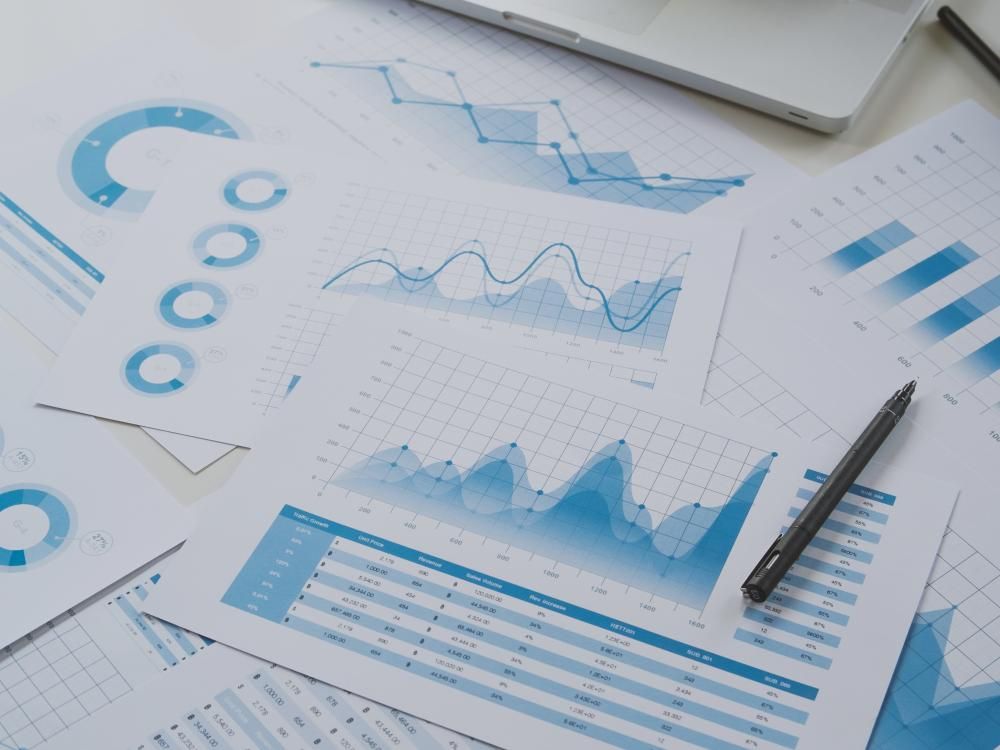Data can be a secret weapon for any business but without proper interpretation it turns into a bank card with a lost PIN—you have it but you can’t use it. Not so long ago, only data scientists had that ‘PIN’ and could make data useful. Everything’s changed when self-service analytics tools hit the market, allowing even non-technical employees to boost their data literacy, underpinning data analytics strategies and turning data into business value.
In an attempt to understand which tools are leaders and major disruptors in the data visualization software industry, it’s easy to find out that there’s an ongoing race between Tableau and Microsoft Power BI. If we look at Gartner’s Magic Quadrants for Analytics and BI Platforms, we will find out that Tableau has been assuming the leadership for eight years in a row, while Power BI—for thirteen! In 2020, both companies have been positioned like this:
In cooperation with our team specializing in business intelligence consulting, we bring the two tools together and look at them at different angles to understand why you should choose one over the other for your business.
A quick overview of Tableau
Tableau grew from a computer science project at Stanford and entered the market as a data visualization tool in 2003. It was aimed at making data analysis accessible to less tech-savvy professionals and providing more possibilities for data storytelling. Tableau swiftly expanded its footprint and became competitive to such formidable players as Oracle, SAP, and Microsoft by offering an efficient solution for data democratization and self-service analytics.
Based on Itransition’s expertise in Tableau consulting, we can say that Tableau’s data science capabilities can be used by individuals and big analytical teams alike.
Tableau continuously enhances its tools by adding machine learning, natural language processing, and smart data preparation capabilities. No wonder that in 2019 the company was acquired by Salesforce, one more disruptor and market leader.
A quick overview of Power BI
Microsoft’s Power BI project saw the light in 2010 under the name of Project Crescent. It was later renamed to Power BI and unveiled in 2013.
Today Power BI implementation means adopting other Microsoft products, like Azure and SQL. For this reason, Microsoft suite users are more inclined to choose Power BI as their data visualization platform. It’s also popular with startups and SMBs due to its attractive price (spoiler alert: not for all use cases).
Tableau vs Power BI: a head-to-head comparison
Both tools have powerful features that attract thousands of users, but each has their weak spots. Let’s see where each tool shines and where it needs to strengthen its positions.
Setup
Power BI can be deployed on-premises and in the cloud and accessed via desktop and mobile devices. Companies that use Microsoft products will have the framework for a quick setup. All they need to do is open the tool and start selecting data sources.
Power BI has the free Power BI Desktop tool widely popular for building data visualizations.
Once users are ready to engage into self-service analytics or scale, they have two paid plans to choose from: Power BI Pro (with a free 60-day trial) and Power BI Premium:
Tableau is also available in desktop, mobile and service versions. With the free tool, Tableau Public, it is possible to visualize and publish data and get access to a large library of user-generated data visualizations made with it.
Tableau is not generous with free trials and offers only a 14-day test drive for Tableau Desktop. It can be extended to one year for students or teachers. The free trial is a full-fledged version where it’s possible to connect data sources, build and customize visualizations, and share them via Tableau Server or Tableau Online.
Tableau’s pricing seems much more confusing. It has three tiers: Creator for accessing the full functionality, Explorer for self-services analytics, and Viewer for out-of-the-box visualizations. Each tier provides access to different product combinations, and the price varies depending on the deployment option:
Power BI seems to have a lower entry barrier for individual users, those who are interested in self-service BI and analytics, and companies deeply invested in the Microsoft ecosystem. However, in some instances, Tableau’s pricing flexibility means the tool might come much cheaper, for example, for on-premises deployment:
The verdict
Tableau is easy to start with. You don’t need to install any additional software—just open a dashboard, select data sources, and start visualizing. Power BI is easier to set up for users of other Microsoft products. However, Power BI looks like a more budget-friendly option, while Tableau is cheaper for on-premises deployment and scaling.
Ready to start your BI project right now?
Data sources
Tableau offers a long list of third-party data source connections. In order to connect a source, users have to specify what data they need to visualize. It means that users should have a general idea of what data should populate their visualizations to make them relevant.
Power BI also boasts numerous third-party connections. What’s more, as long as Power BI is a part of the Microsoft ecosystem, it can be seamlessly integrated with the Microsoft stack.
When connecting data sources, Power BI customers can face a limit of 3.5K data points. Tableau has no such barrier and allows processing large datasets faster, using less memory. What’s more, Tableau has no data storage limits for any plan. When it comes to Power BI, users have 10GB with Power BI Pro and get the maximum of 100TB with Power BI Premium.
The verdict
It’s possible to connect various third-party data sources to both tools, but Tableau users can enjoy unlimited data points and data storage. Power BI falls victim to its close relationship with Microsoft—while the Microsoft ecosystem residents can find it convenient, users who attempt to use the tool from the outside can face some challenges during deployment.
Visualizations
With Power BI, users can easily upload datasets, select numerous visualization types, like all kinds of charts, KPIs, maps, forecasting models, and more, and add data from the sidebar to a visualization draft. However, if users need a customized visualization, they will need to write some code.
Tableau also offers a rich selection of charts, graphs, tables, plots, maps, infographics, and their mix-and-match combinations. It boasts an intuitive interface that allows creating aesthetically pleasing and sophisticated visualizations with drag-and-drop tools. In order to customize available visualizations, users need to master a simple calculation language.
The verdict
Both solutions offer all kinds of big data visualizations and are able to produce efficient visuals which users can use to read their data, spot patterns, and make data-driven decisions. There is a general assumption, though, that Tableau’s visualizations are richer and more enticing.
Analytics
Users can ask natural-language questions of their data and get answers as visualizations in both tools.
Power BI has a Q&A tool powered by NLP and NLG technologies that lets users question their data by text or voice via any device, generating visual replies. When typing their questions, users can make use of autocomplete and suggestions. When it comes to voice requests, users can converse with Cortana, Microsoft’s virtual assistant.
Tableau has a similar tool called Ask Data where it’s possible to type questions and get insights in the form of rich data visualizations, with no need to understand the data structure. The feature works with all available data sources and doesn’t require additional setup. It’s possible to customize the underlying semantic model by adding synonyms, definitions, and calculations.
Additionally, Power BI offers the insights feature built on a set of advanced analytical AI-powered algorithms that helps users find trends, correlations, and potential outliers in their data.
Data scientists can make use of automated ML models to work with predictive analytics in Power BI. They can create and train new models and apply them to generate insights. To do that, they need to master two coding languages used by Power BI: M and DAX.
Tableau’s AI-powered Smart Analytics tool helps streamline data processing and minimize manual cleanup, while the Explain Data feature highlights specific data points and saves time on finding the right answers. As for predictive analytics, Tableau can automatically select the model based on the available data thus letting users generate forecasts by dragging-and-dropping. It’s possible due to Tableau’s integration with R and Python that allows running code inside Tableau.
The verdict
Both tools offer powerful analytical capabilities combined with machine learning and data modeling. Power BI provides an unbeatable advantage of drilling into data by asking questions through both text and voice. Tableau, however, is more user-friendly when it comes to predictive analytics as it allows all types of users to generate forecasts in a drag-and-drop interface. Power BI, in its turn, requires coding to tap into predictive analytics.
Usability and adoption
Power BI and Tableau are both leaders for a reason. They offer a rare blend of ease of use and advanced functionality. Both tools provide users with drag-and-drop tools, pre-built APIs, and tools for developers and data scientists.
As a Microsoft’s product, Power BI will be familiar to Microsoft users. At the same time, if you’re new to Power BI, you will be forced to get deeper into the Microsoft ecosystem.
It’s worth mentioning that Power BI is rather coding-centered when it comes to customizations and model building. Tableau, in its turn, balances between coding and dragging-and-dropping, which makes it more accessible for non-technical users.
Power BI has an extensive knowledge base and learning resources, like articles, demos, webinars, and YouTube videos. Tableau has a learning portal categorized by Tableau products, which helps users of any technical level to master the tool.
Tableau offers more customer support options—phone, email, and support tickets, while in Power BI premium users get help faster than those with a free account. Tableau also has one of the best communities among BI technology vendors. It has a great variety of user groups that generate valuable content, like online tutorials, ready-made visualizations, how-to threads, and organize events and competitions. Power BI’s community is more developer-centric as it focuses on coding and custom integrations rather than analytics.
The verdict
Both tools are accessible for those with no prior training. However, Power BI seems more intuitive for users of other Microsoft products. When it comes to customizations, Tableau is a number-one choice as most of its features don’t require coding. Both tools offer various customer support options but Power BI’s users with free accounts will have limited access to it. Plus, Tableau’s user community is more robust and analytics-centered while Power BI’s focuses on coding.
Turn your data into business value
How Itransition helped a customer choose between Tableau and Power BI
In one of our BI consulting projects, a Canadian commercial bank found it hard to face various data management challenges and choose the right data analytics tool to create a BI architecture solution perfect for non-tech users.
To help them select a suitable BI suite, we prepared a detailed comparative analysis of both tools. To demonstrate their differences and validate them against the business intelligence project plan, we built OLAP cubes and configured test reports based on real data in both tools. Our pilot reports served as the foundation for further BI implementation based on the customer’s needs.
As a result, our detailed analysis and real-life examples helped the customer understand which BI solution is optimal for them to eliminate existing bottlenecks and provide employees with an intuitive BI tool.
Final thoughts
To become a leader, a BI tool should combine ease of use, analytical capabilities, global recognition, and cost-effectiveness. Both Tableau and Power BI possess all these characteristics. To understand which one fits with your requirements and possibilities more, you can take the available free products for a test drive or turn to Itransition for a detailed comparison based on your needs.







